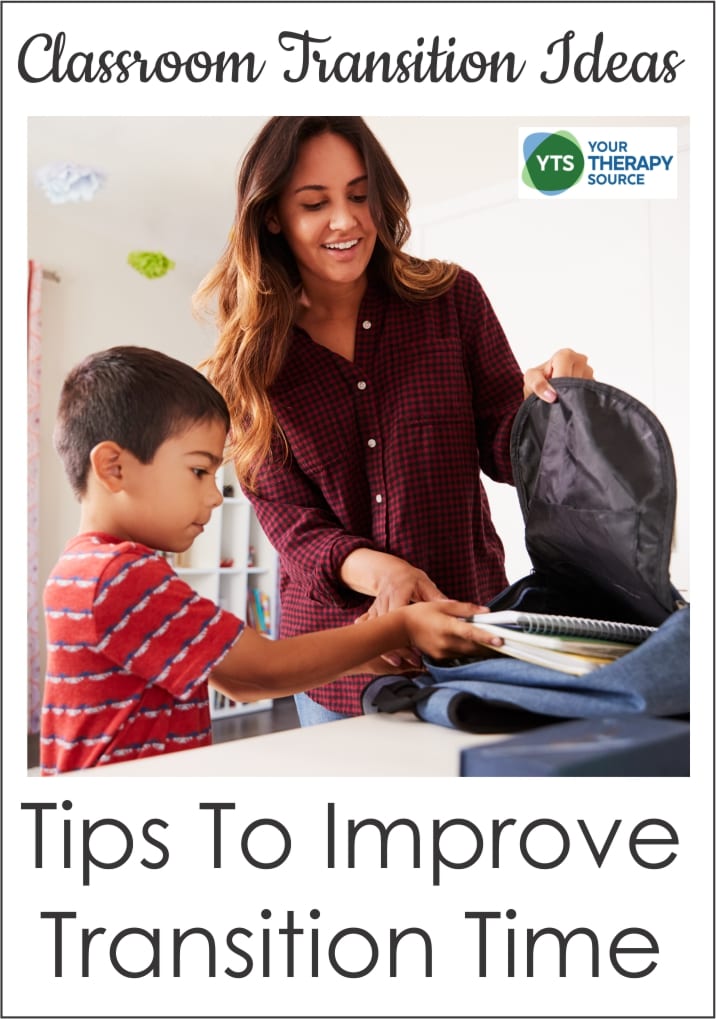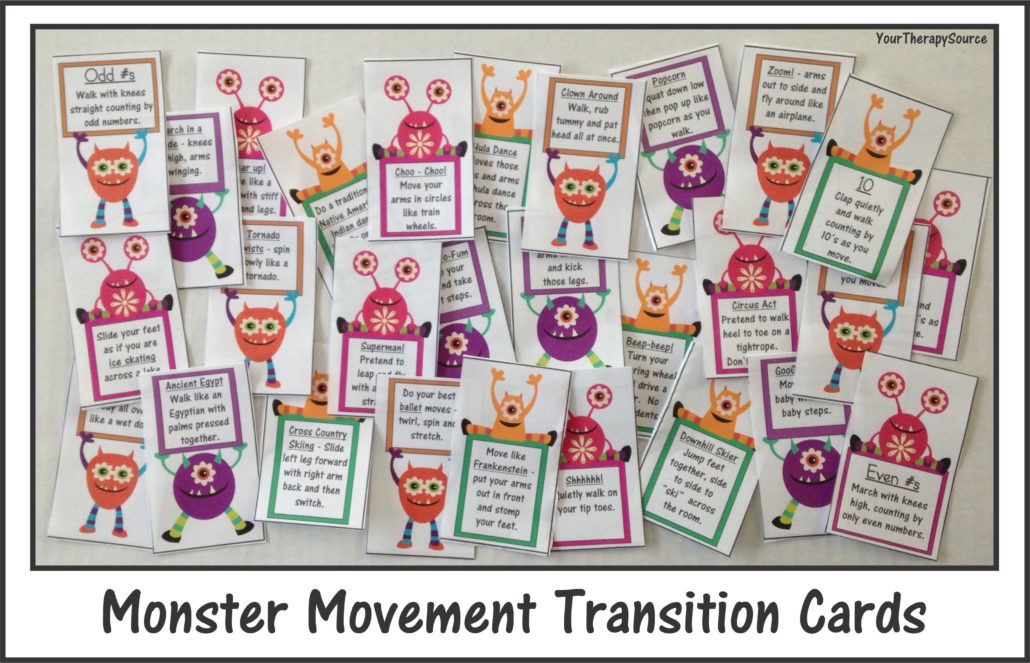Classroom Transition Ideas – 10 Tips To Improve Transition Time

Do you have students who have difficulty transitioning from one activity to another? Maybe they have a hard time transitioning from the classroom to the therapy room or special class.
There are many reasons why a student may have trouble with transitions. Think about all the skills needed for successful transitions:
- listening skills: students need to listen to the directions.
- follow directions: students need to be able to follow multi-step motor commands.
- self-regulation skills: students need to be able to control their emotions, thinking, behavior and motor actions in different situations
- body awareness: students need to maintain appropriate space between themselves, their peers and classroom furniture. Check out Personal Space Journey for students who need help with body awareness.
- motor planning: students need to be able to plan and execute the motor action of moving their body from one activity to another.
- motor timing: students need to be able to move slowly, quickly, start and stop.
As you can see from the above, transitioning from one activity to the next does require an extensive amount of skills and perhaps that is why so many students can struggle in this area. Teachers and school staff need suggestions for classroom transition ideas.
10 classroom transition ideas and Tips
Here are classroom transition ideas and tips to help the school day go smoothly.
1. Establish a consistent schedule or routine for the student to follow. Provide visual picture symbols if necessary for the student to follow. Visual activity schedules are pictures, photographs, words or symbols that are arranged in a specific order to represent the step by step sequence required to complete a task. The purpose of visual activity schedules is to increase independence, engagement, and acquisition of new skills during classroom, recreational, transition, and play activities. They help to provide clear expectations for academic, motor, social and behavioral skills.
2. Allow the student enough time to experience the activity before moving on to the next activity. Use a timer if necessary.
3. Make sure the student understands what the directions are or what is expected of him/her. Some students will need to be taught how to follow the routine. This takes practice and time.
4. Provide verbal and physical cues that a transition is approaching. There are plenty of visual timers that can be used to provide warnings for transitions.
5. Modify schedules to have the least amount of transitions possible. For example, if a student is already out of class to go to the nurse or another related service it may be a good time to schedule therapy to reduce the number of transitions in and out of the classroom. Another option would be to provide push in therapy services to avoid transitioning in and out of the room.
6. Sing songs or chants to signal transitions. Use the same songs each time so children can anticipate what is to happen next.
7. Provide feedback about transitions. If a student does a good job transitioning explain to him/her what they did correctly. If changes need to be made offer suggestions of how to improve the transition the next time.
8. As the student’s skills improve during transitions, encourage the student to transition independently.
9. Keep it simple with directions for the transition. One or two step motor commands should be effective and concise.
10. Provide positive reinforcement for other students who complete transitions successfully. Students will learn from each other and model other behaviors.
Want to add in movement break to your transitions?
Sometimes adding in physical activity during transition time can be an excellent way to increase movement and have a brain break without interrupting class time. There are many different ways students can move around the classroom or from class to class. Here are a few suggestions for physically active classroom transition ideas.
Try walking at different speeds. Instruct the child to walk slowly, then increase the pace, then slow again constantly changing. The goal is to keep walking quietly without bumping into any peers when you change speeds.
Transition using different locomotor skills such as tip toes, walk sideways, or gallop slowly.
Get creative and be silly. Transition walking with your hands on your head, then your hips, then your knees.
Check out Monster Movement Transitions. This digital download is a collection of 56 quick sensory motor movement cards. Just grab a card and perform the action when transitioning in the classroom (ie desk to circle time), in the hallway (ie classroom to therapy room) and at home (ie wake up activities, during TV commercial breaks, etc). Just print them out, cut apart and you are set to go, no equipment required! There are 30 cards with various movement activities and 26 cards that are animal actions for the letters A to Z.




